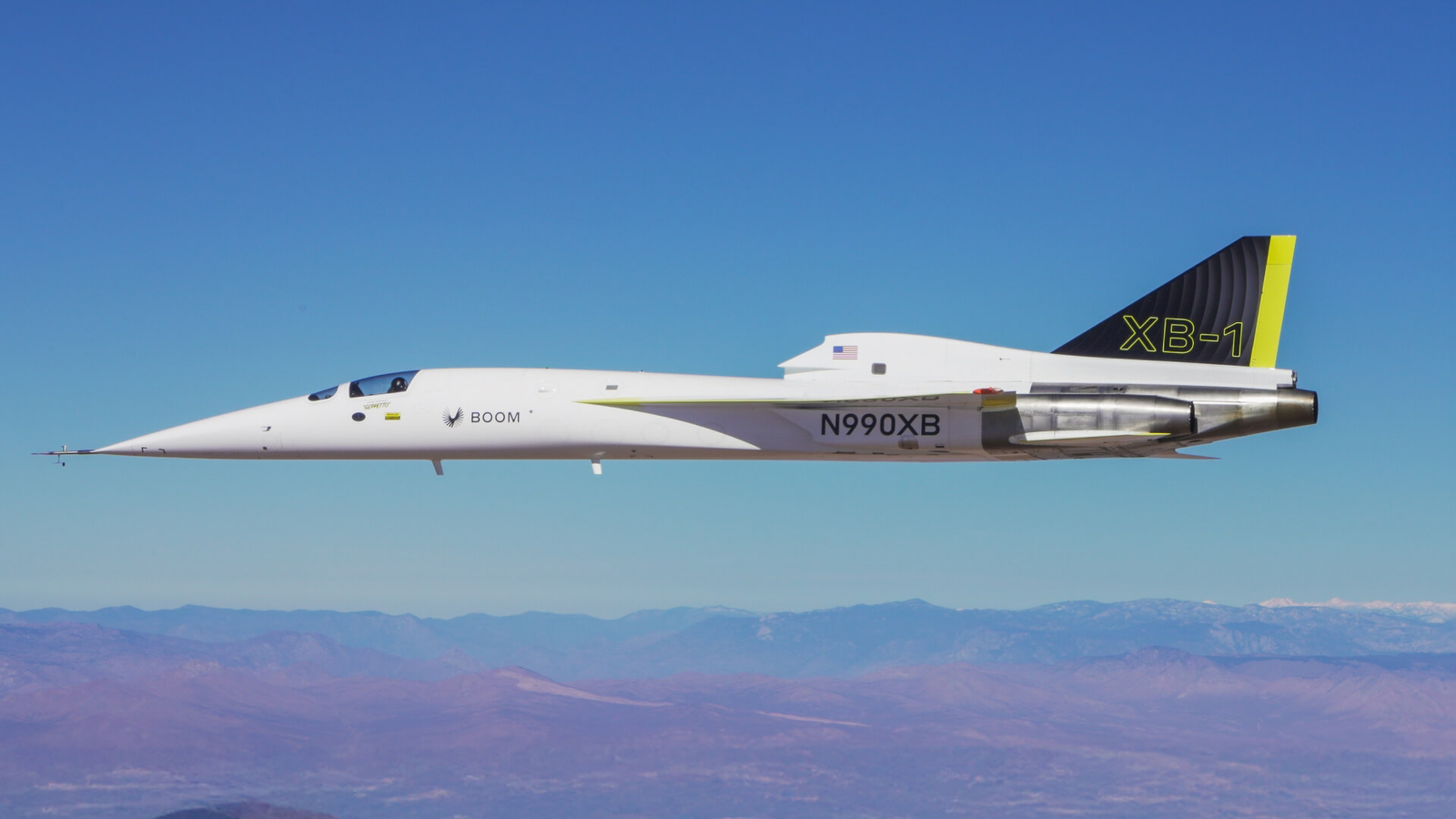For decades, the dream of supersonic passenger travel has fascinated the world. From the Concorde’s first commercial flight in 1976 to its retirement in 2003, the promise of cutting transatlantic travel times in half captured imaginations but remained out of reach for most. Now, Boom Supersonic is bringing back supersonic air travel with its Overture airliner, set to revolutionize commercial aviation by the end of the decade.
Recently, Boom’s prototype aircraft, the XB-1, successfully surpassed Mach 1, marking a significant milestone in the development of supersonic passenger travel. Could the Overture be the next big leap in aviation? Let’s explore its history, technological advancements, environmental considerations, and the challenges ahead.
A Brief History of Supersonic Passenger Travel
The pursuit of supersonic commercial aviation began in the mid-20th century as the world sought to make air travel faster. Two aircraft stood at the forefront of this ambition:
1. The Tupolev Tu-144: The Forgotten Pioneer
The Soviet Union’s Tupolev Tu-144 was the first supersonic transport (SST) to take flight in 1968, preceding the Concorde. However, its commercial service was short-lived due to technical failures and safety concerns. It was retired from passenger service after just 55 flights, cementing its place as an experimental but flawed attempt at supersonic travel.
2. The Concorde: A Supersonic Marvel
The Concorde, developed jointly by Britain and France, was the first (and so far only) commercially successful supersonic passenger jet. With a cruising speed of Mach 2.04 (1,354 mph), the Concorde could cut transatlantic flight times in half, reducing travel from New York to London to just 3.5 hours.
Despite its technological achievements, Concorde had high operational costs, a limited passenger capacity, and faced growing environmental concerns, including sonic boom regulations that restricted its flight routes. After 27 years in service, it was retired in 2003, leaving the world without a commercial supersonic airliner—until now.
Boom Supersonic: Bringing Back Faster-than-Sound Flights
1. The XB-1: A Successful Supersonic Test
On January 28, 2025, Boom Supersonic’s XB-1, a one-third-scale demonstrator aircraft, successfully broke the sound barrier, reaching Mach 1.1 over California’s Mojave Desert. This was a crucial step in proving the feasibility of supersonic commercial travel and testing new technologies for Boom’s upcoming full-scale airliner, Overture.
2. The Overture: The Future of Supersonic Passenger Travel
Boom’s Overture is designed to be the world’s next commercial supersonic aircraft, set to enter service by 2029. With a projected speed of Mach 1.7 (1,304 mph), it will significantly reduce flight times across key international routes.
Key Features of the Overture
• Speed: Mach 1.7 (Twice the speed of today’s commercial jets)
• Passenger Capacity: 64 to 80 passengers
• Flight Time Reduction: New York to London in 3.5 hours (compared to ~7 hours today)
• Airline Partners: Orders from United Airlines, American Airlines, and Japan Airlines
• Planned Entry Into Service: 2029
Technological Innovations: Why Overture Is Different
1. Reduced Sonic Boom
One of the biggest drawbacks of previous supersonic aircraft was the sonic boom—a loud noise created when an aircraft exceeds the speed of sound. The Concorde’s boom made overland flights impractical, limiting it to transatlantic routes.
Boom is working on a “boomless” supersonic design, leveraging aerodynamic advancements to reduce noise levels and allow for broader flight paths, including over land.
2. Sustainable Aviation Fuel (SAF)
Environmental concerns were a major reason for Concorde’s demise. Boom aims to address this with Sustainable Aviation Fuel (SAF), which significantly reduces the carbon footprint of high-speed travel. The company plans for Overture to operate on 100% SAF, making it a more eco-friendly solution.
3. Cutting-Edge Aerodynamics
Boom Supersonic has partnered with top aerospace engineers to design Overture’s fuselage and wings for maximum efficiency at supersonic speeds. The aircraft will be powered by four engines, specifically optimized for high-speed cruising.
The Challenges Ahead
While the promise of supersonic travel is exciting, Boom faces several key challenges:
1. Regulatory Approvals
Governments around the world have strict noise regulations for aircraft. Sonic boom mitigation is crucial for Overture to gain approval for overland routes.
2. Infrastructure & Airline Adoption
Current airport infrastructure is designed for subsonic jets, meaning that runways, terminals, and air traffic control systems may require modifications to accommodate supersonic travel.
3. Ticket Costs: Will It Be Affordable?
One of the reasons Concorde failed was its high ticket prices, often exceeding $12,000 for a round-trip transatlantic flight. While Boom Supersonic aims to offer more affordable pricing, it remains uncertain how competitive fares will be compared to traditional business-class travel.
The Future of Supersonic Flight
With the XB-1’s successful test flight, Boom Supersonic is closer than ever to bringing back supersonic passenger travel. The Overture is set to enter service by 2029, potentially reshaping the global aviation industry by making faster-than-sound travel a reality once again.
If Boom can overcome regulatory, technological, and economic challenges, we may soon see a world where long-haul flights take hours instead of days. As airlines prepare for this next generation of aviation, the dream of supersonic travel is once again within reach.
Would you fly supersonic? Let us know your thoughts in the comments!



